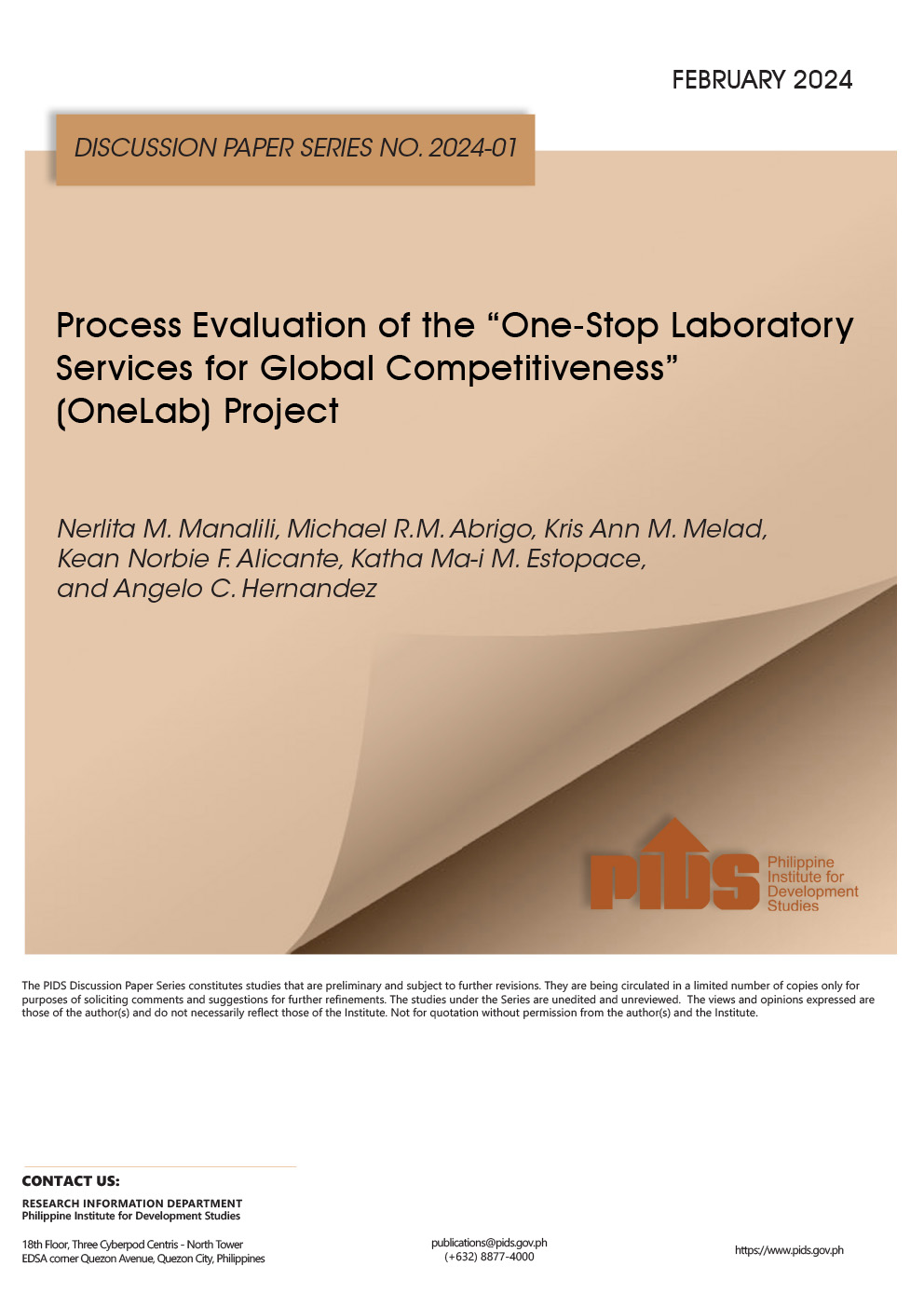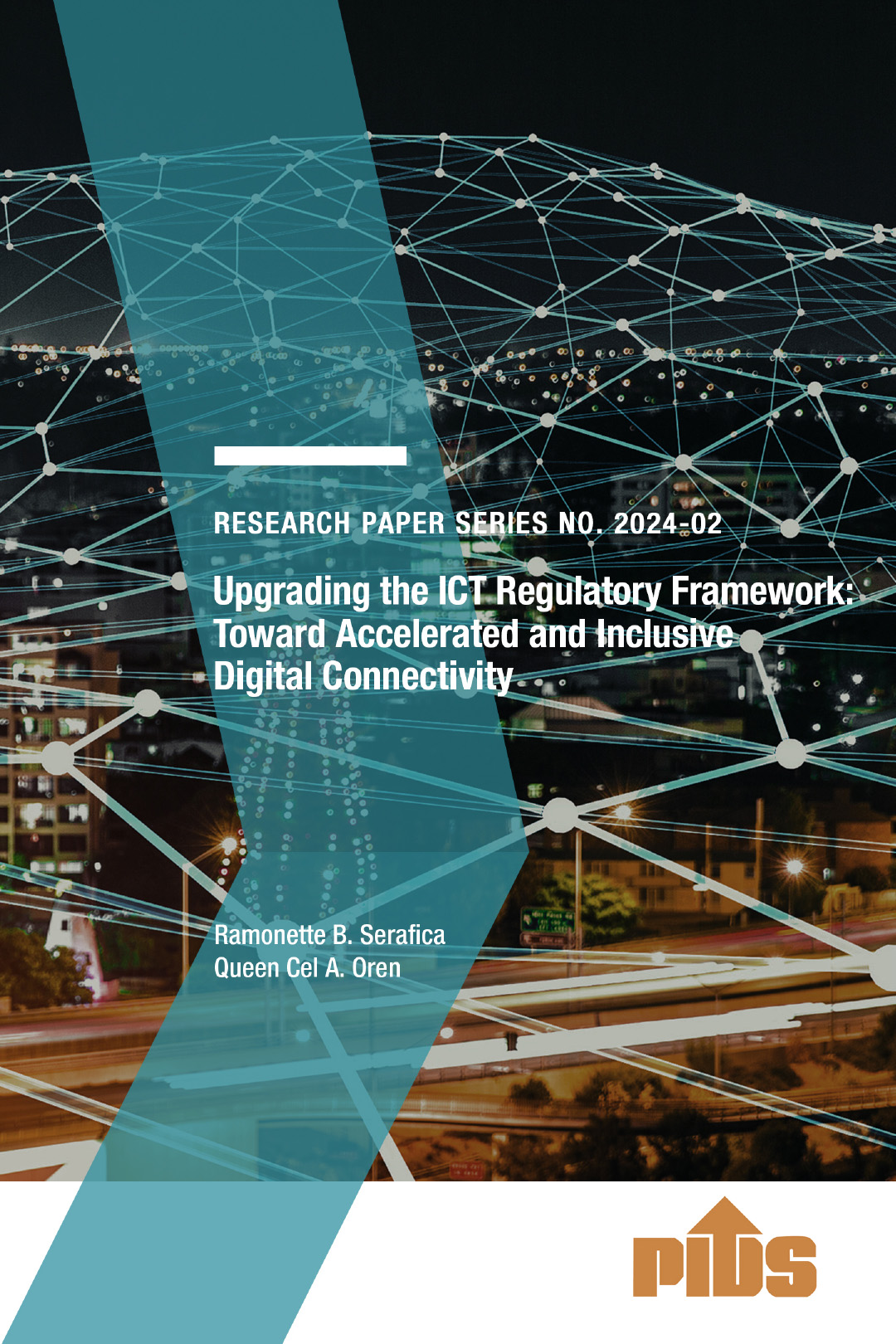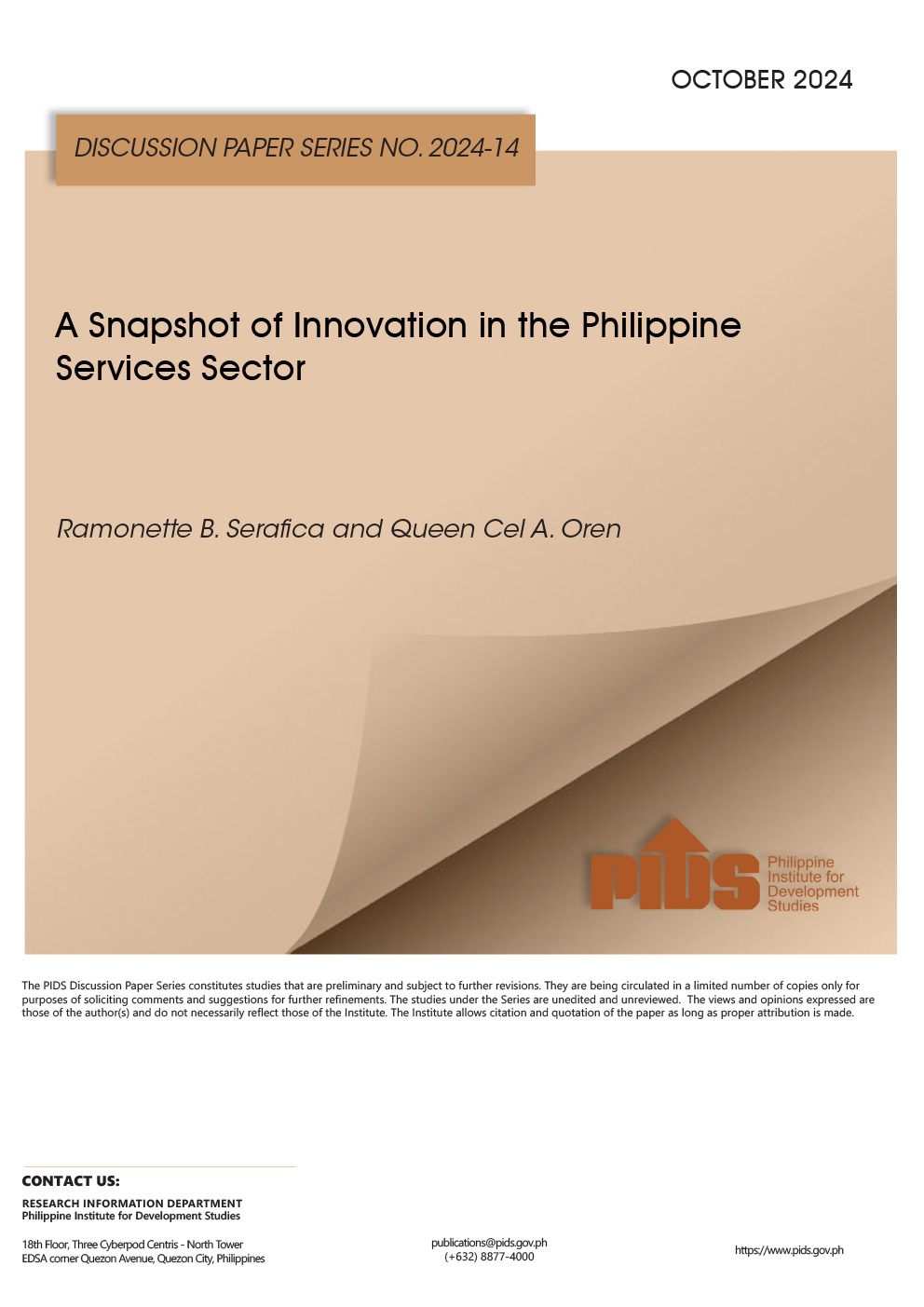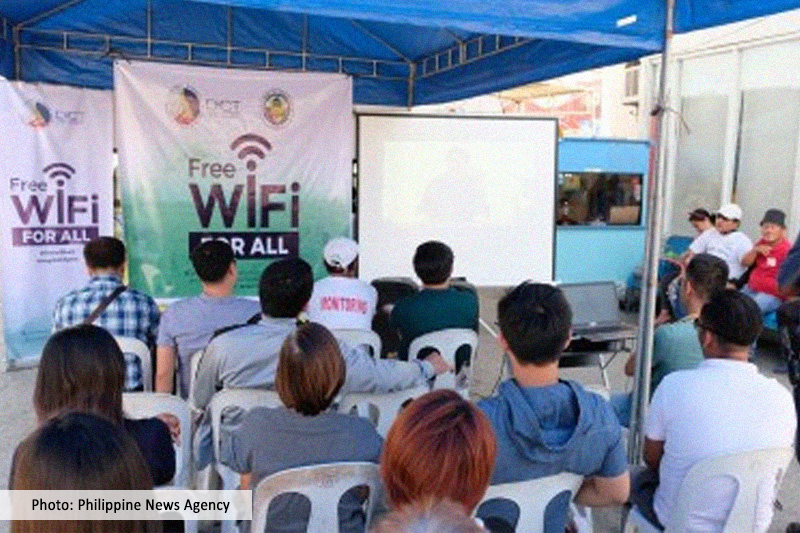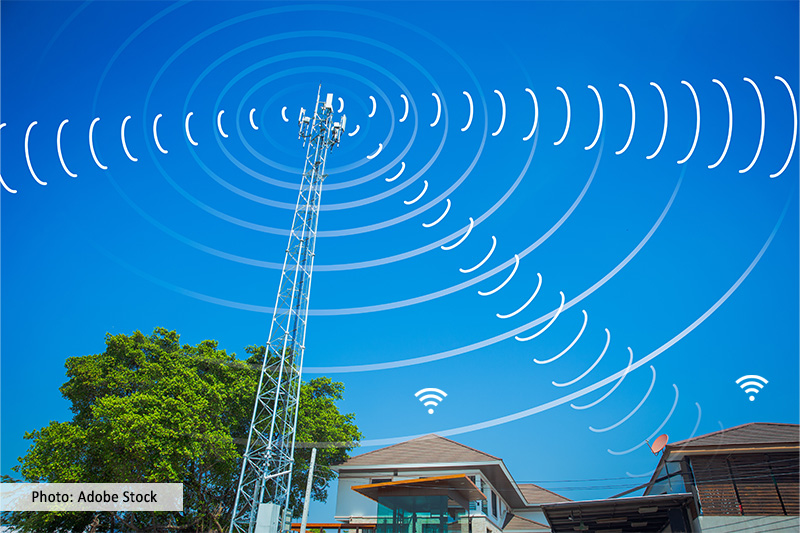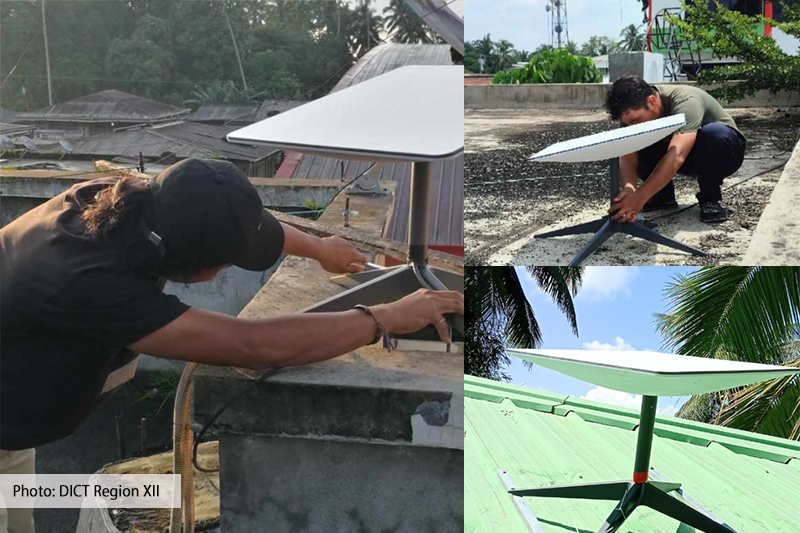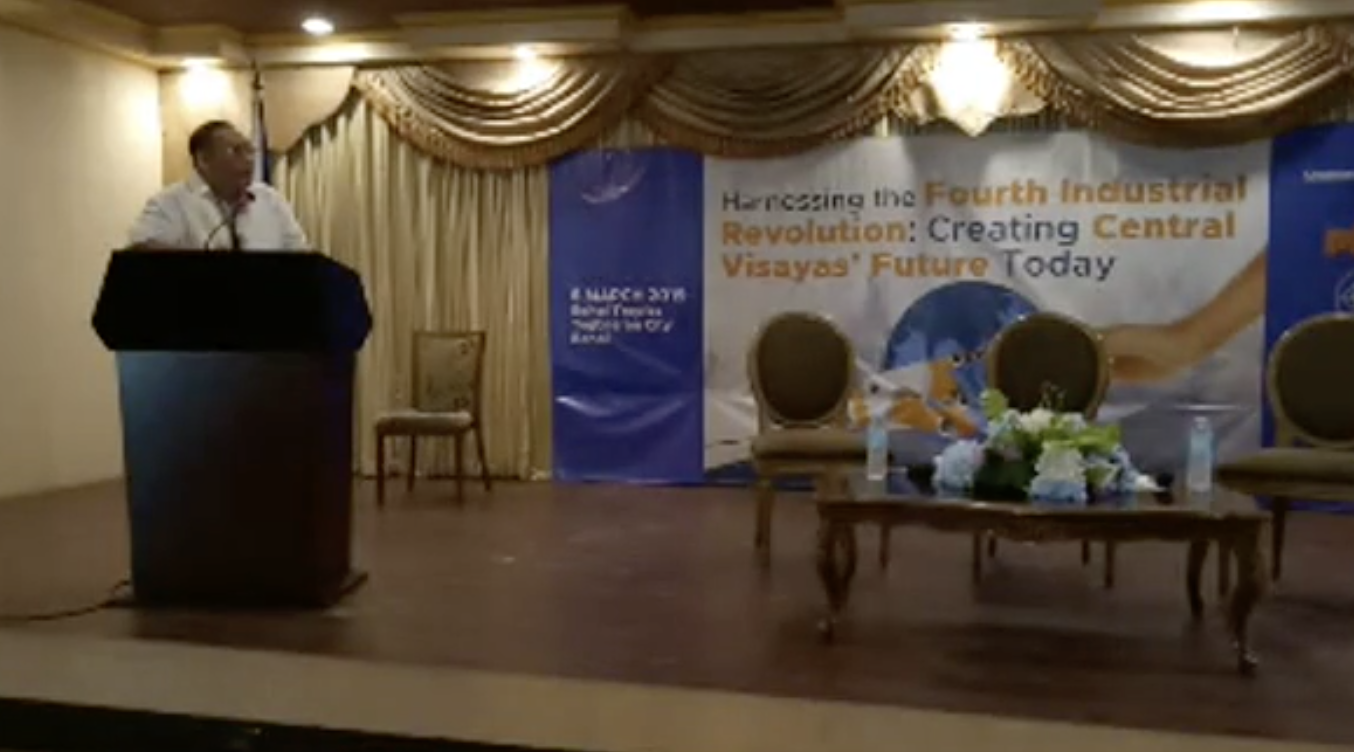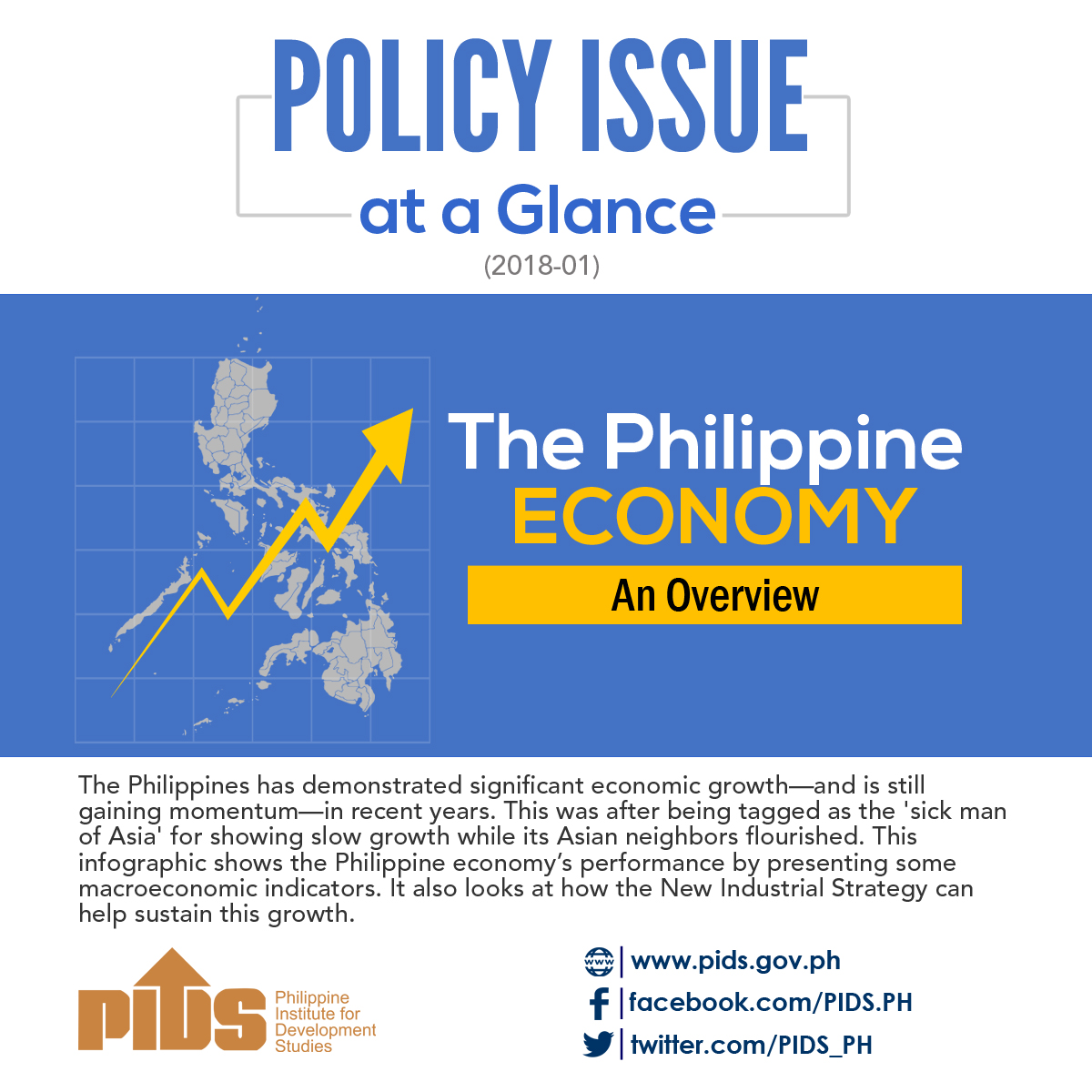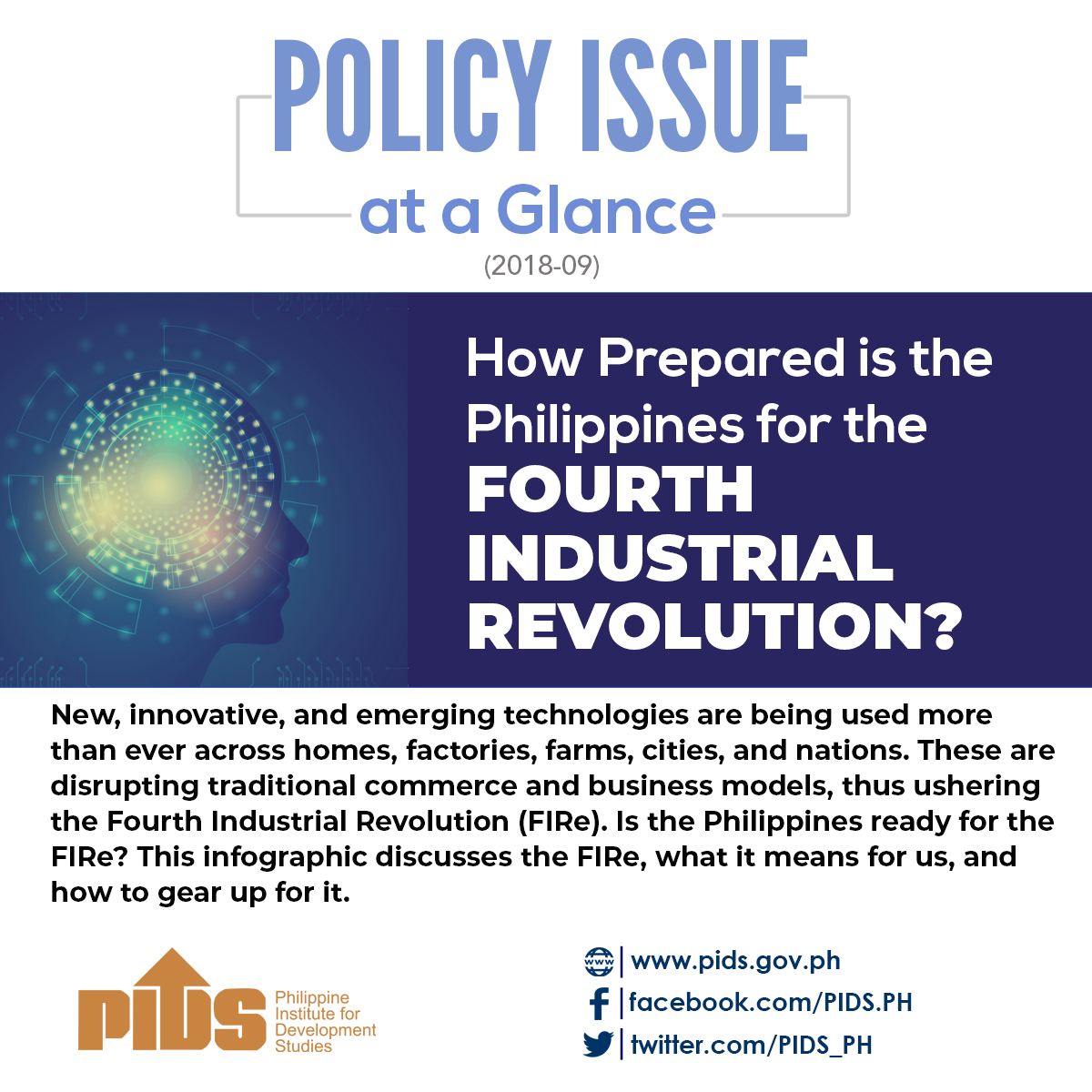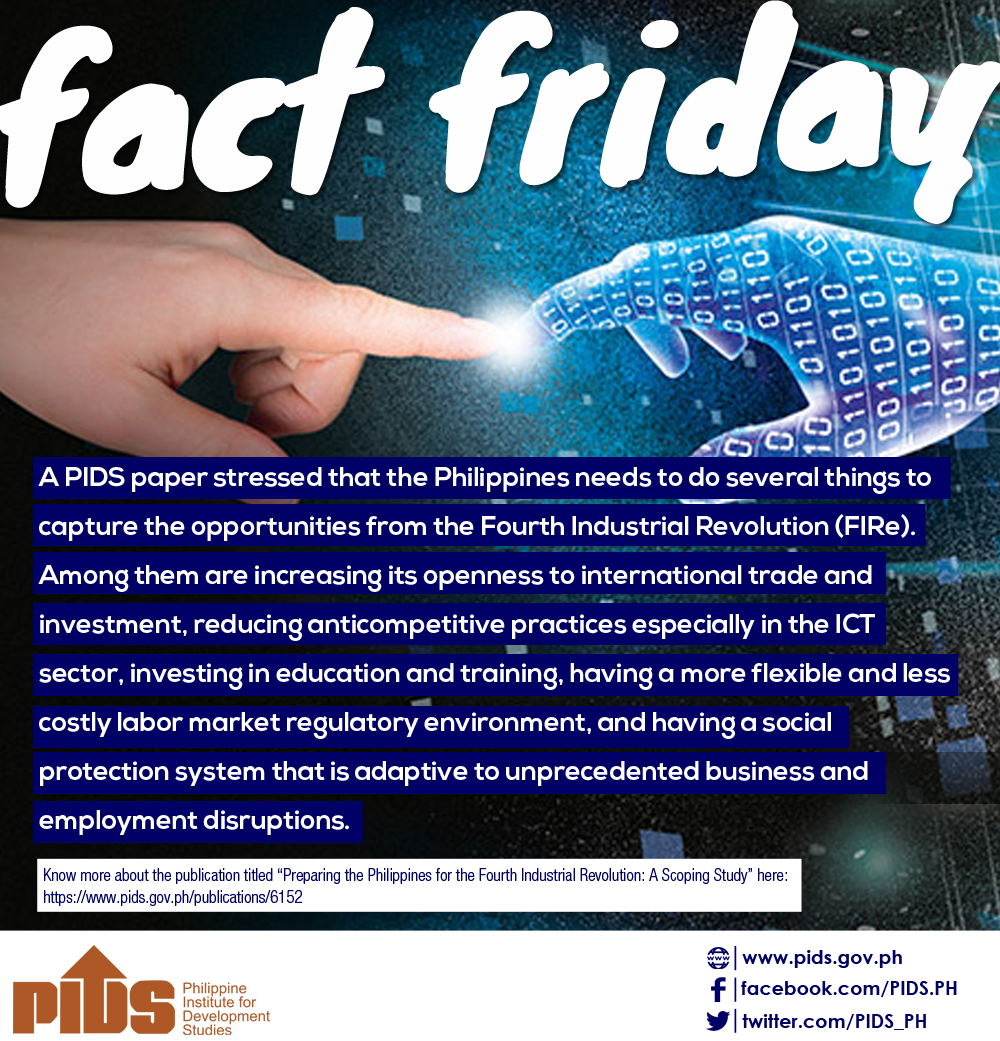The frontier of technological and scientific developments arising out of the digital and computer revolution – which is summarized by the oncoming convergence of smart phones, robotics, artificial intelligence, internet, 3D printing, big data, biotechnology, materials science, energy storage and quantum computing – is called the Fourth Industrial Revolution.
The implications for Philippine economic development of the Fourth Industrial Revolution was the topic of a strategic conference held on Sept. 19 at the Shangri-la Hotel last week, sponsored by the Philippine Institute for Development Studies (PIDS.)
It is a conference of great relevance to the nation’s economic future.
“The Fourth Industrial Revolution.” The first industrial revolution began in Europe (from the 18th to the 19th century) following the mechanization of agricultural and industrial production as a consequence of the invention of the steam engine and the growth of cities and industrial towns.
The second industrial revolution followed from the continued expansion of major industries and the birth of mass production during the mid-19th century and continued on to 20th century. This industrial transformation featured the harnessing of carbon energy for industry, featuring further the rapid development of transport and telecommunications and the widespread use of electric power.
The third industrial revolution is often called the digital revolution (the widespread adoption of digital technology over analog and mechanical devices). This revolution ushered in the use of computers, the internet and the rapid adoption of information and communication technology.
A clear exposition of the Fourth Industrial Revolution is given by Klaus Schwab, the executive head of the World Economic Forum, in his book, The Fourth Industrial Revolution. The next paragraphs are quotes from his summary article published in Foreign Affairs (Dec. 12, 2015).
“(The) Fourth Industrial Revolution is building on the Third, the digital revolution that has been occurring since the middle of the last century. It is characterized by a fusion of technologies that is blurring the lines between the physical, digital, and biological spheres....
“The speed of current breakthroughs has no historical precedent. When compared with previous industrial revolutions, the Fourth is evolving at an exponential rather than a linear pace.
“Moreover, it is disrupting almost every industry in every country. And the breadth and depth of these changes herald the transformation of entire systems of production, management, and governance...
“Already, artificial intelligence is all around us, from self-driving cars and drones to virtual assistants and software that translate or invest.
“Impressive progress has been made in AI (artificial intelligence) in recent years, driven by exponential increases in computing power and by the availability of vast amounts of data, from software used to discover new drugs to algorithms used to predict our cultural interests.
“Digital fabrication technologies, meanwhile, are interacting with the biological world on a daily basis.
“Engineers, designers, and architects are combining computational design, additive manufacturing, materials engineering, and synthetic biology to pioneer a symbiosis between microorganisms, our bodies, the products we consume, and even the buildings we inhabit.”
“The conference.” The one-day PIDS conference brought together experts to discuss issues covering the productive sectors (agriculture, industry and services); science and technology; labor market and social protection; and human capital development.
Eleven experts came from foreign institutions to Manila. The rest are Philippine businessmen, academic professors, scientists and technologists, and high officials representing various government agencies.
The key speakers were the experts who came from abroad. The local speakers gave examples of the situation and relevant experience affecting the country.
If the two large plenary sessions are an indication of the quality of the response of the government and the private sector, there are hopeful and worrisome elements in understanding the nature of the country’s capacity to deal with the challenges of the Fourth Industrial Revolution.
I was elated to hear Jaime Augusto Zobel de Ayala’s assessment of the challenges and the need to open the country to more foreign investment to expand the opportunities and improve worker skills.
Deputy Governor Diwa Guinigundo of the Bangko Sentral gave examples of opportunities for growth as well as the disruptive impacts of developments in financial technology that indicates awareness.
Private speakers from the academic and professional community presented encouraging examples of the need for change, especially for the improvement of skills in the labor force. A business-oriented speaker gave a good grade for Philippine capacity to face up to the challenges provided that market opportunities are being opened up and allowed to prosper.
The worrisome responses came from two important government representatives on the science and technology side, perhaps because of lack of time.
The Department of Science and Technology representative gave a lame understanding of the challenges facing the country. In the case of the new Department of Information and Communications Technology, Secretary Rio was mostly preoccupied with the problem of choosing a third telco participant in the communications industry.
“Needed: a strategy and vital policies.” My thought on these challenges is that our policy makers need to frame strategies and policies so that we can take advantage of the emerging opportunities and avoid pitfalls.
There may be unique challenges posed by the Fourth Industrial Revolution. But we must understand our past failures so that we can move forward better faster, be more flexible, and capable of jumpstarting.
First, they must understand why we have lagged behind in achieving even exceptional progress in our own industrial revolution so far (based on the second and third industrial revolutions). Proof of this is why we are far behind some East Asian neighbors.
For a start, we can first ask why our political constitution contains provisions that hamper the essential flexibilities we need.
Why do we have restrictive economic provisions to foreign capital in the matter of land use, natural resources, and public utilities; to the ownership of educational institutions, of media, and why do we restrict some special professions only to nationals?
If we banish these provisions from the political constitution, we can still rely on our legislative processes to take care of protecting our interests while enhancing our flexibilities. Those provisions hampered us in the past. They will be a killer to our hopes of dealing with the challenges posed by the Fourth Industrial Revolution.

